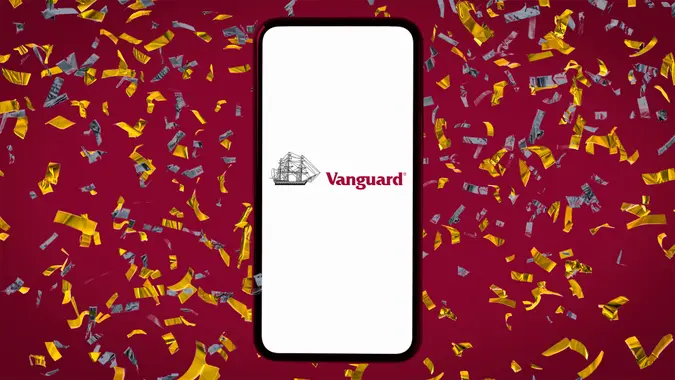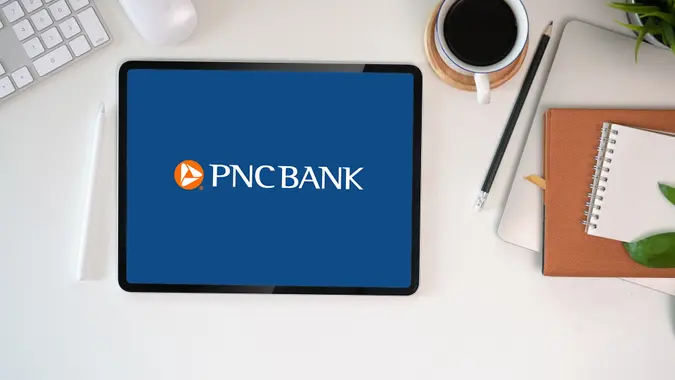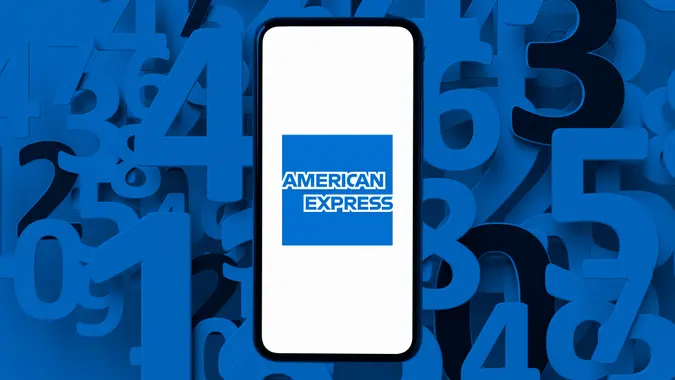How To Complete a CD Rollover: Your Guide

Commitment to Our Readers
GOBankingRates' editorial team is committed to bringing you unbiased reviews and information. We use data-driven methodologies to evaluate financial products and services - our reviews and ratings are not influenced by advertisers. You can read more about our editorial guidelines and our products and services review methodology.

20 Years
Helping You Live Richer

Reviewed
by Experts

Trusted by
Millions of Readers
Certificates of deposit (CDs) offer stable returns and are one of the safest ways to invest your money for income — but what do you do when your CD term ends?
If you’ve got money in a CD that’s about to expire, you might consider a CD rollover. Most banks allow you to take your CD deposit and interest earned, and roll it into a new CD term.
This article will walk you through how CD rollovers work, terms and conditions to know, and when to use a CD rollover vs. withdrawing your funds.
What Is a CD Rollover?
A certificate of deposit rollover is the process of transferring money from an existing CD into a new one as soon as it matures. Also known as a “renewal,” it’s a way to reinvest the principal and interest for a new predetermined period. Investors can use this method to compound interest over time.
Why Choose a CD Rollover Over Withdrawal?
If you have a 12-month CD that is ending soon, you can choose to rollover the CD into a new 12-month term. Your principal deposit and interest in the CD will roll into the new CD as soon as your previous CD matures. Your new principal balance is the sum of your old balance plus interest earned.
How CD Rollovers Work
CDs offer fixed terms that lock up your funds in return for a fixed interest rate. Terms can range from one month and up to five years or more, and when the term ends, your CD “matures.” At maturity, you can roll the funds over to a new CD term.
Rolling over a CD is a straightforward process. Here’s how it works:
What Happens When a CD Matures?
As the maturity date approaches, the bank might send you a notice that the CD is set to mature. This also lets you know that you have the option of reinvesting.
The CD Grace Period
The notice will give you a grace period, such as 10 days after the maturity date, to decide what to do. If you choose to do nothing, your bank automatically rolls it over if the CD is set to automatic rollover, or deposit funds into your bank account.
Automatic Rollovers: When and Why They Happen
Unless you tell the bank not to, it may roll over your CD into a new one with the same term, but at the current rate. In the meantime, your bank’s policy will determine whether it will pay interest on your money during those 10 days.
Banks are only required to send you the maturity notice if your CD has a term of more than one year. If your CD does not, the bank might automatically roll over the principal and interest into another CD without any notice unless you tell it not to before the grace period is up.
Make sure you read the fine print on your CD account so you are aware of how your bank handles this.
CD Rollover Example
Imagine you have a $5,000 CD with a 24-month term that is set to automatically renew. The bank sends you a maturity notice reminding you of the maturity date and your 10-day grace period after the CD matures.
Unless you notify the bank before the grace period ends to let it know you’re withdrawing the money, the bank will take the money — your initial deposit plus all the interest you’ve earned — and put it into a new 24-month CD. The APY on that new rollover CD will be whatever percentage the bank is currently offering for 24-month CDs.
How To Rollover a CD: A Step-by-Step
As your CD approaches maturity, be on the lookout for a notice from the issuing bank. Once you receive notice your CD is going to mature soon, here’s how to roll it over:
1. Check if Your CD Has Automatic Rollover
In your CD maturity notice, check to see if it’s set to automatically rollover, or if your bank is planning on just depositing the funds into your bank account. If not automated, you’ll need to manually choose to rollover funds.
2. Choose Your New CD Term
While automatic rollovers typically deposit your funds — principal and interest — into a CD of the same term, a manual rollover usually allows you to choose a new CD term. Make sure you choose a term length during which you don’t need access to the money.
3. Once Your CD Matures, Confirm Rollover
Once you’ve chosen your rollover or confirmed it’s an automatic rollover, check that the rollover has completed after maturity. You should see the new CD balance and account.
4. Review Your CD Balance
Make sure your CD balance includes your previous balance plus all the interest earned over the life of your previous CD. Contact the bank if there are any discrepancies.
Benefits and Drawbacks of CD Rollovers
A CD rollover offers many benefits. Here are a few key advantages that could boost your financial strategy:
- Convenience: Automated process for savers who prefer simplicity
- Continuous growth: Keeps your money earning interest without interruption
- No risk to principal: Deposits insured by the FDIC up to $250,000
- Easy to customize: Can tailor different maturities to your specific investment objectives
Before you commit to this CD strategy, understand the drawbacks of a CD rollover. Here are the potential negative features to consider:
- Rate disadvantage: The new rate might be lower than your previous rate
- Missed opportunity: Better returns might be possible with alternative investments
- Liquidity issues: Your funds will be locked for an additional term
What To Do Before Your CD Matures
Before your CD hits its maturity date, there are a few things you’ll want to do.
Note Your CD’s Maturity Date
You’ll likely need to take action before this date — or within a week or so after this date — to choose what to do with your CD.
Check Your Bank’s Policy for Renewals
Some allow you to make changes when your CD matures — select a different term, for example — or make a partial withdrawal or designate a funding source other than your current CD balance. Also, confirm the grace period.
Review Your Savings and Investments
Finally, review your other savings and investment accounts and decide whether you need access to your CD funds, or whether you’d prefer to roll it over into another CD.
If you want to roll over your CD funds, you should shop around to find the best rates and term to meet your goals. If your current CD offers great rates and a term you enjoy, you can just let it roll over. If you want to change CD accounts, you can choose to withdraw funds and move to another financial institution.
If you want to withdraw funds and have them accessible, you might consider moving your savings into a high-yield savings account (HYSA) to still earn interest.
Alternatives to CD Rollovers
CDs are a safe way to earn above-average interest on your savings, but it’s always a good idea to consider equally safe and lucrative alternatives:
- Withdrawal and reinvestment: Rather than roll over your CD, you can withdraw the money and put it into an entirely different CD. As you compare CD rates and terms, look for CD specials and other promotions that let you earn higher yields.
- Laddering CDs: A strategy called CD laddering takes the rollover process a little further. With a CD ladder, you maintain several different CD accounts at once, each with a different maturity date. This gives you access to some of your invested funds regularly while you roll over the rest to maximize interest.
- No-penalty CD: If you want access to your funds without penalty, you may consider a no-penalty CD. These CDs typically pay lower rates, but you can access funds anytime without any early withdrawal penalties.
- High-yield savings account: High-yield savings account rates rival those of high-yielding CD terms, although they’re variable, so they can change. However, your money is always available for withdrawal.
- Money market account: Money market accounts are savings accounts with some features in common with checking accounts. Many allow you to write a limited number of checks each month, for example, and you get a debit card for purchases and cash withdrawals — both of which might also be limited. Some money market accounts earn high yields, but they often have monthly fees and minimum balance requirements.
How To Avoid Common CD Rollover Mistakes
Avoiding these common CD rollover mistakes is the best way to ensure that your CD accounts meet your current and future savings goals.
- Neglecting to check rates before the grace period ends: This causes your CD to roll over automatically, for the same term as the maturing CD, but at a potentially lower rate. If that happens, you’ll be stuck with the lower rate until the new CD matures.
- Locking in unfavorable terms: Even if the new rate is favorable, you still miss out on the opportunity to change the term. As a result, your money could be tied up longer than you’d prefer.
- Overlooking the grace period: The grace period is your chance to withdraw your money or roll over your CD, perhaps with custom withdrawal, funding and term options. If you overlook this, you might be locked into an option that may have worked before, but doesn’t suit your current financial needs.
To avoid these mistakes, you’ll want to review your CD terms and rollover options before the grace period ends. You can then evaluate whether it’s worth it to roll it over, or if you want to choose a new term or other use for your funds.
You’ll need to contact your bank before the grace period ends to ensure you don’t get stuck with a new CD that you’re locked in to.
Final Take: Making the Most of Your CD Rollover
Rollovers are a nice convenience and can be a good way to simplify your banking. But you’ll get the most benefit from your account with a more hands-on approach:
- Set reminders for your CD’s maturity date, preferably before the actual date, to give yourself time to explore your options.
- Shop around to find the best rate and term combination for your needs.
- Consider building a CD ladder to strike a balance between high yields and greater access to your money.
CD rollovers are a reliable way to grow your savings, but they work best when aligned with your financial goals.
Jacob Wade contributed to the reporting for this article.
Our in-house research team and on-site financial experts work together to create content that’s accurate, impartial, and up to date. We fact-check every single statistic, quote and fact using trusted primary resources to make sure the information we provide is correct. You can learn more about GOBankingRates’ processes and standards in our editorial policy.
- Consumer Financial Protection Bureau (CFPB). 2024. "What is a certificate of deposit (CD) rollover or renewal?"
- CFPB. 2023. "What is a certificate of deposit (CD)?"
- CFPB. 2023. "The interest rate offered for CDs (certificates of deposit) is low. Is there anything I can do about that?"
- CFPB. 2025. "Bank accounts and services."
 Written by
Written by  Edited by
Edited by 
























